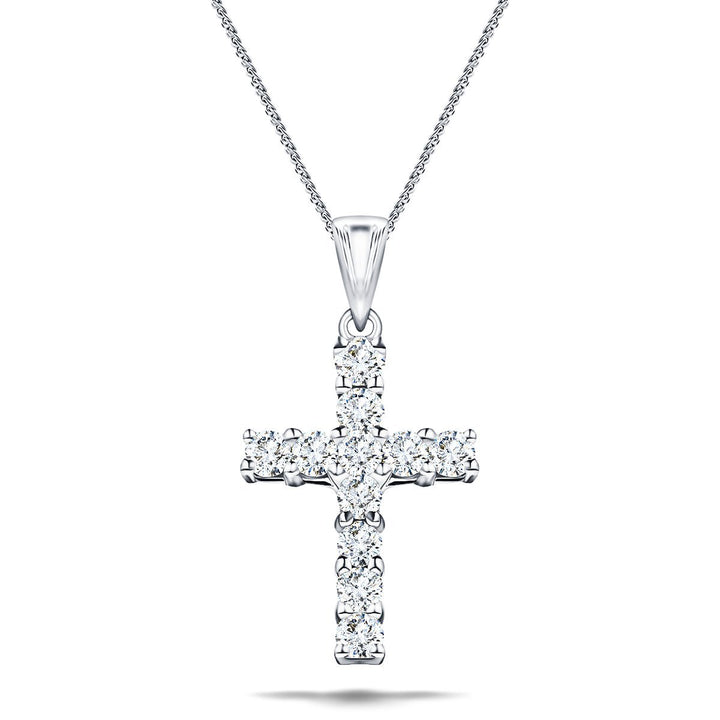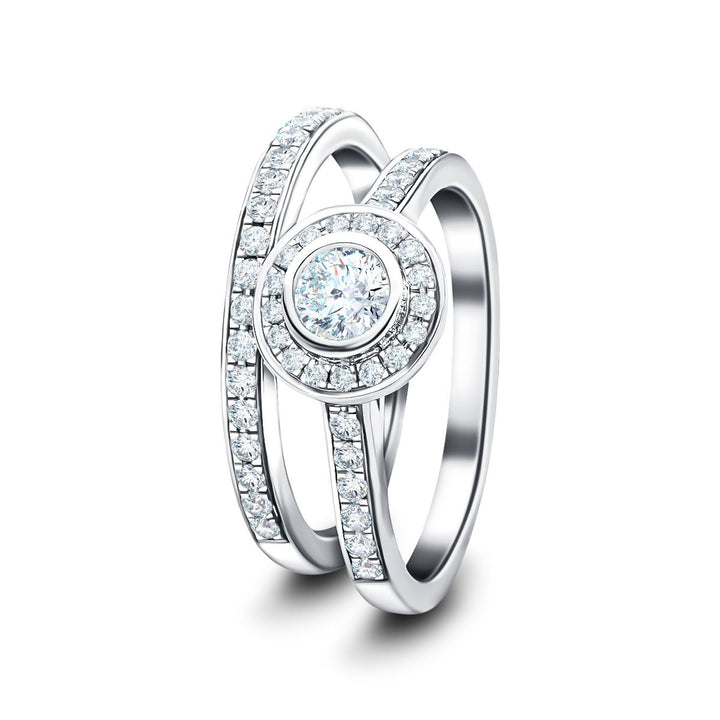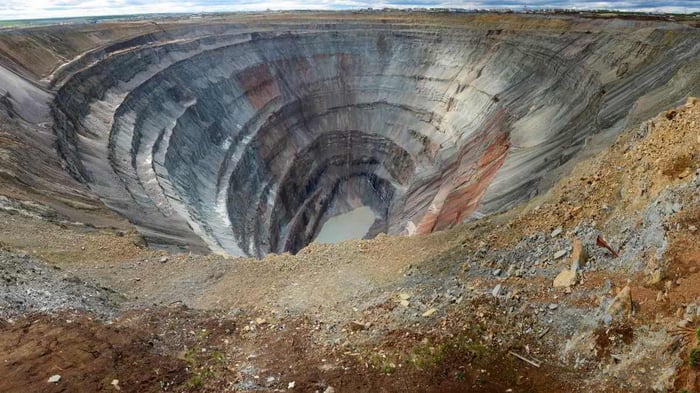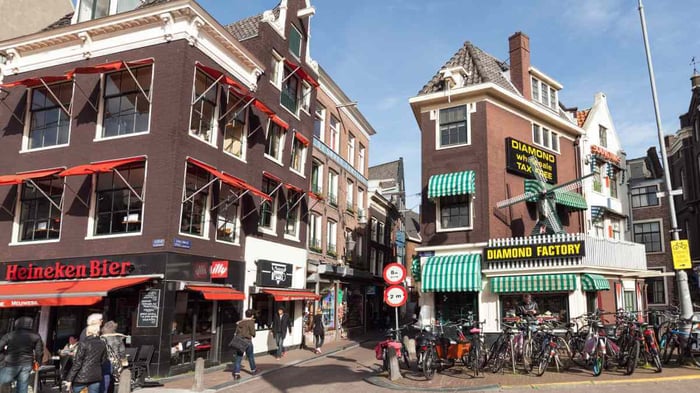The Journey Of A Diamond From The Ground To Your Engagement Ring
The beautiful diamonds in your engagement ring or any piece of diamond jewellery, have been on a long journey lasting millions of years. The titanic forces of nature were needed over millions of years to form the diamonds mined deep under the earth. Some of those diamonds are forced to the earth's surface to be found by accident or by those fortunate enough to know where to look.
However they reach human hands they must then travel across the globe. On that journey, they will be sorted, shaped, cut and polished before being set into the engagement ring that will spend a lifetime celebrating your love and marriage.
This article is the story of how your diamond came to be the sparkling centrepiece of your most treasured jewellery.
How Are Diamonds Created?
Diamonds are formed of pure carbon. We are familiar with carbon as a totally black substance used to make objects look black, such as car tyres, paint, inks, and plastics. Deep below the ground, tremendous pressure and temperatures cause black carbon to be transformed into a different form, crystals of immense hardness that when polished and cut are transparent, usually colourless and reflect light causing a unique sparkle and brilliance we value very highly in jewellery.
Over millennia, some of this new crystalline material is forced toward the earth's surface where it is mined, or sometimes forced entirely to the surface where they can be found on, or just below the surface. Often they are found in riverbeds where over time the soft rock is eroded leaving behind the hard diamonds which settle in riverbeds to be found by prospectors.
Diamonds in the form they are mined are not beautiful at all. They are dull lumps of crystal that can look like pebbles. Most people, not expert in diamonds, would ignore these objects as being worthless bits of stone.
1.00ct Classic Claw Set Diamond Cross Pendant in 18K White Gold

£1,631.00
£2,857.00
This gleaming cross pendant is a timeless piece that looks exquisite on the neckline. With a carat of sustainable, luxurious diamonds in white gold, it creates breathtaking sparkle. The perfect gift for any special occasion. This shimmering piece of jewellery… read more
Where Are Diamonds Found And Mined?
Diamonds are found in around 35 countries. South Africa, Botswana and Russia are the largest producers of gem diamonds. Australia is the largest producer of industrial diamonds. Smaller quantities of diamonds come from India, Brazil, Canada, China and North America.
African Diamonds
Although South Africa is the largest producer of diamonds on the African continent Angola, Botswana, Democratic Republic of Congo, Namibia, Sierra Leone and Tanzania all produce significant quantities of diamonds. In recent years, the phenomenon of Blood or Conflict diamonds has arisen, describing diamonds produced to fund civil wars or where diamonds are produced under harsh conditions that violate human rights. Angola and Sierra Leone have been the worst instances of this type of production. However, the Kimberley Process, a production system and agreement, has reduced the volume of diamonds produced under unethical conditions. Most jewellers, including All Diamond, do not sell diamonds that are not produced ethically.
North American Diamonds
Three states in the USA produce diamonds, Arkansas, Colorado and Wyoming. In Arkansas is the Crater of Diamonds State Park. Here visitors can look for and keep diamonds. The state of Arkansas owns the mine. Over the years this mine has produced more than 70,000 diamonds.
Canada started diamond mining in the 1980s at around the same time that the conflict diamond scandal erupted. Canada's mines make great play of the fact that their diamonds are all produced ethically with no human rights violations. The Ekati mine to the north of Yellowknife produces 4-5 million carats of diamonds per year. The Diavik mine at Lac de Gras Island, Yellowknife produces 7-8 million carats per year. It is famed for its high-quality colourless gems.
Russian Diamonds
Russian diamonds are produced in Siberia's Yakutia region by the world's largest diamond company, Alrosa. Alrosa operates 12 diamond mines, some of which are open-pit mines and others are deep underground mines. Mining in Russia did not begin until the 1950s. The quality of Russian diamonds is very high due to their whiteness and clarity. Russian diamond cutters, mostly working in Moscow, have a deservedly high reputation for their cutting > This makes Russian diamonds highly sought after.
Australian Diamonds
Although Australia is known for its industrial diamond production, the country also produces speciality diamonds for jewellery. The Argyle mine is famed for its production of pink diamonds which, because of their rarity, are very highly valued. The Argyle mine produces around 90% of all the world's pink diamonds although these rare gems form only 1 in 1000 of production. Unfortunately, the Argyle is at the end of its production. The mine closed on November 3rd 2020, so very few new pink diamonds will ever reach the market, making them anything from 10 to 30 times more costly than equivalent white diamonds.
What Happens After Diamonds Are Mined?
After diamonds have been mined, they are sorted by size, colour, and grade and then sold onto intermediaries. Some intermediaries such as De Beers are very large; others are much smaller. The intermediaries buy the diamonds in sales sessions called 'sights' where the rough, uncut diamonds are sold to diamond crafters. These buyers may keep them for cutting or resell to smaller traders who then either cut and polish the diamonds themselves or sell them again.
Diamond Cutting And Polishing
After the diamonds have been packaged and sold in parcels most end up in a diamond trading centre such as Amsterdam, Tel Aviv or Dubai. Most diamonds are cut and polished in one of three main centres Surat in India, Guangzhou and Shenzen in China and New York City in the USA. India has between 19-30% of the diamond cutting and polishing market, China around 17%, followed by New York City and other smaller centres.
Once a diamond has been cut and polished, it will be passed to artisans who set the stones into jewellery, often following designs from designers worldwide. Of course, some diamonds are set into jewellery by smaller manufactures and designers around the world.
The End Of A Long Journey - Your new Diamond Jewellery!
£2,452.00
The central round diamond fringed with smaller stones brings an eye-catching focus to the engagement ring in this matching diamond wedding and engagement bridal set. Expertly created in shimmering 18k white gold with the luxurious touch of diamonds that your… read moreCertified Matching Diamond Engagement & Wedding Ring 0.90ct G/SI 18k White Gold

£4,467.00
Once the diamond has been placed into a precious metal setting, it is ready to be sold as an engagement ring, necklace, earrings, bracelets and more. A journey of thousands of miles across the globe and millions of years in the making that ends by enhancing the beauty of all who wear them.
Diamonds are a fascinating work of nature; the beauty comes from the work of nature and man in harmony. No two diamonds are ever the same. Each reflects the skill of the craftsman and designer. We are privileged to have such beauty available to our descendants and us!
All Diamond jewellery is designed in the UK for British and international tastes. We feel privileged to work with such beauty and pass that beauty on to you. Please take a moment to look at our diamond jewellery collections. We are proud of our work. We hope that you will be as proud to wear what we and nature have created.




